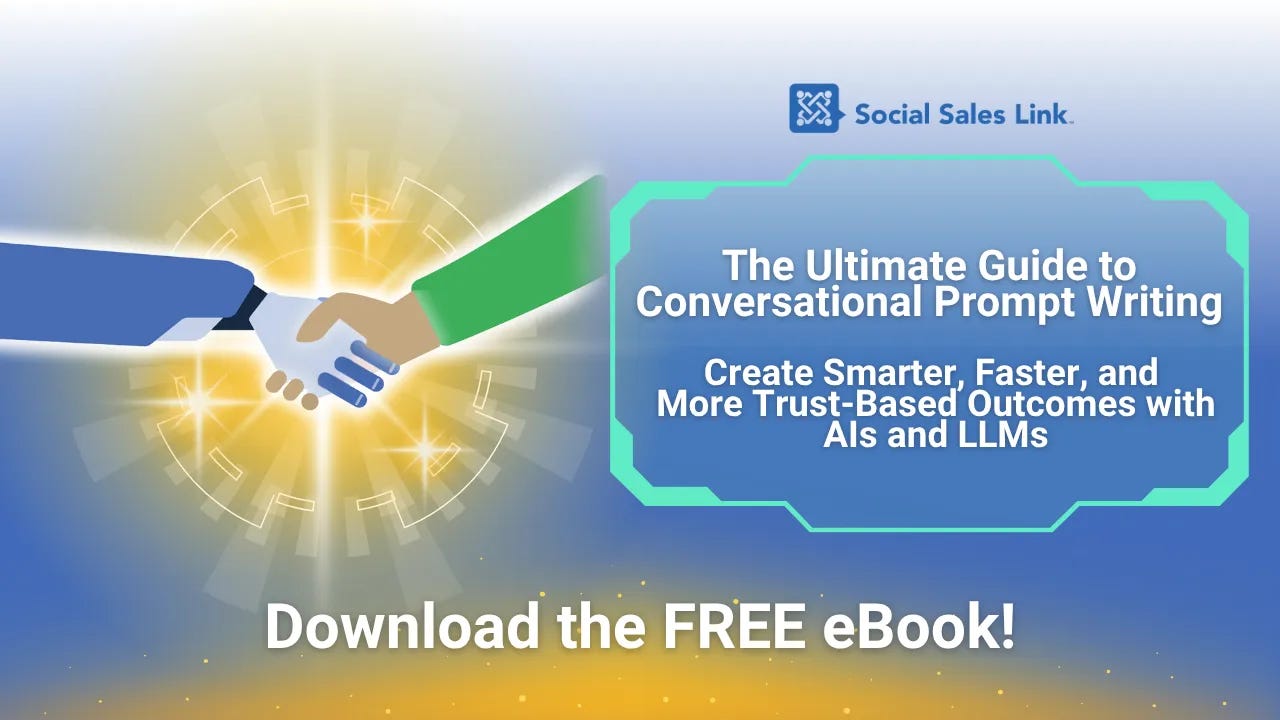The AI Writer’s Blind Spot
Why em dashes ("—") still "out" people using AI, and the simple alternatives few are talking about
The TL;DR (Executive Summary)
Em dashes (”—”) are one of the biggest “AI tells” on the internet today.
Most AI-generated text leans on them in ways humans typically do not.
Cleaner, more natural alternatives exist that keep your writing human… without sacrificing rhythm (periods, ellipses, commas, colons, parentheses, and line breaks).
These alternatives can be added to any Prohibitions list or writing avatar to keep your voice consistent and invisible to AI-detection patterns.
The Em Dash Problem Everyone Sees but No One Mentions
Spend ten minutes scrolling LinkedIn and Substack, and you’ll see it… or rather, them.
I’m talking, of course, about em dashes (”—”).
People are getting smarter about AI-written content, but the em dash is still one of the loudest giveaways. Why? Because large language models (LLMs) rely on it as a structural shortcut.
Instead of choosing more precise sentence structures, AI drops in em dashes to glide from one idea to the next. Simple, right?
To the human reader, though, something feels “off,” even if they may not be able to explain why. Copy with em dashes reads too smoothly. Too convenient. Too predictable. Plus, everyone nowadays just “knows” that copy with em dashes comes from AI (even though it doesn’t sometimes!).
Worse yet, many AI systems exhibit internal patterns that use em dashes far more frequently than human writers do. So even when the content is strong, the punctuation exposes the copy’s LLM origin.
The fix is simple:
Teach the model alternatives.
Teach yourself alternatives.
And bake those preferences into your style guides and Prohibitions documents.
Why AI Overuses Em Dashes
Three reasons show up consistently.
1. AI uses them as a structural crutch
Models find it easier to connect clauses with a dash than to rewrite the sentence for clarity. Is the sentence getting long? The model drops in a dash. If the idea veers in another direction? Yet another dash. Dash, dash, —.
LLMs build rhythms into copy that quickly feel mechanical. Since humans aren’t mechanical, we pick up on those patterns… either consciously or subconsciously.
2. Humans don’t write (or talk) in em dashes in their everyday speech
When we talk, we pause, restart, shorten, simplify, or break thoughts apart. We do not mash two ideas into a sentence with a single punctuation pivot.
Good writing mirrors good speech, which is why I always urge people to read anything that an LLM generates out loud. That’s because AI-default writing mirrors internal logic, which is not how people learn and comprehend information that’s presented to them.
3. Most prompt templates do not forbid them
This one’s a biggie.
Writers ask AI to “make this sound natural” or “more conversational.” Yet, AI doesn’t inherently know what “natural” or “conversational” means.
Without explicit guidance, the model will use its standard patterns… that “internal logic” I just mentioned. And guess what internal logic includes for AIs? That dreaded em dash.
This is why adding “Avoid em dashes” or “Under no circumstances are you to use em dashes” to a Prohibitions list is one of the easiest fixes for authenticity in LLM-generated content.
The Six Best Alternatives to Em Dashes
During one of our recent mastermind coaching sessions here at Social Sales Link, I was going on (yet another) rant about em dashes… I was actually ranting on how I used to use them, but I actually can’t now, thanks to $#&@ AI (another subject for another time).
Anyhooo … one of our members raised their hand and asked a very simple but profound question:
What can we use instead?
I have to admit… I’ve never been asked that before. And yet, somehow… I was able to rattle off six alternatives just off the top of my head. I also thought at the time, “hey, this is great for an article,” which you’re now reading.
With that, here are my six replacements for em dashes that feel natural, subtle, and human. They also give your writing more texture and variety.
1. Periods
Periods are the cleanest and most overlooked substitute. Simply break the sentence in two. Short sentences feel confident. They also slow the reader’s consumption of your content, but in a good way.
Example:
AI version: This looks simple — but it is not.
Human version: This looks simple. It is not.
2. Ellipses (my favorite, if you haven’t already guessed)
Ellipses create a soft pause that feels conversational and reflective. They mimic the way people naturally trail off when thinking, reconsidering, or shifting gears. Used thoughtfully, they add warmth and humanity because they mirror real spoken hesitation.
They can also provide impact. When placed at the right moment, they build anticipation and draw the reader forward. They signal that something meaningful is coming next, which makes the next line land harder.
Caution: overuse can make writing feel vague or indecisive (I’ve been a victim of this myself). Readers may sense a lack of clarity or direction. When used sparingly, though, ellipses can soften transitions and create a more intimate, almost whispered tone.
Example:
Most people think AI makes writing easier… until they realize it also amplifies their habits.
Another example? Their use in this article.
3. Commas
Use them when the second idea is a natural continuation of the first. Not every shift in thought needs dramatic punctuation.
Example:
AI version: Writers want clarity — readers want connection.
Human version: Writers want clarity, and readers want connection.
- OR -
Writers want clarity, while readers want connection.
4. Colons
Perfect for signaling expansion or explanation. It is the most direct alternative when you need a reveal… even better than ellipses.
Example:
Only one thing truly improves your writing: revising your thinking.
5. Parentheses
Another one that needs to be used sparingly. Parenthesis add texture without calling attention to themselves. They feel human because humans often narrate their own side notes.
Example:
Most people read quickly (and forget even faster), which is why clarity matters.
6. Line breaks
This one is more for social networks and online mediums like LinkedIn and Substack, where spacing beats punctuation, and white space can be our friend. Line breaks create rhythm without relying on symbols. The reader’s brain fills in those “beats.”
Example:
Most people treat AI as a shortcut.
The professionals treat it as a collaborator.
I strongly recommend not using line breaks like this in anything that’s published (eBooks, white papers, reports, etc.); only for socials and other online mediums.
How To Train AI Away From Em Dashes
This is where your Prohibitions documents and style avatars matter.
A simple line like:
“Avoid em dashes. Use periods, ellipses, commas, colons, parentheses or line breaks instead.”
…will completely retrain the model’s rhythm.
Add it to your:
Avatars
Writing guidelines
Your default prompt stack
Over time, the AI learns your cadence.
And more importantly, your writing stops sending the “AI signal” that readers (and platforms) are increasingly attuned to.
Cleaner Writing Starts with Simpler Choices
Em dashes are not the enemy. Overuse is. The moment you become intentional about punctuation, the AI-generated “feel” starts to disappear.
The goal is not to outlaw em dashes. The goal is to use them with purpose, instead of relying on them by default. Heck, even I throw in an em dash every once in a while—but only when I think they’ll have true impact, not as a crutch (like I did just now).
If you want your writing to sound more human, more grounded, and more you, this is one of the easiest wins you can implement right now.
Need help in using AI to start more trust-based sales conversations? Grab our free eBook, The Ultimate Guide to LinkedIn and AI Prompts for Trust-Based Conversations, today!
NOTE: The hero image for this article is AI-generated.



